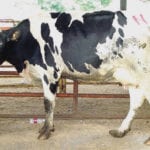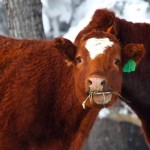
Tag Archives Veterinary physician

Handle antibiotics with care
Horse Health: How the ‘new’ veterinary oversight affects horse ownership

Vets call for better management of dairy culls
The sector agrees better guidelines and improved transport conditions are worthy goals

Veterinary association sets framework for medicine oversight
The guidelines are intended to lead to consistent regulations throughout Canada

Health Canada edging closer to action on antimicrobial resistance
Use of these products in livestock is likely to be sharply curtailed to protect products important to human health
Beef 911: When the need arises, fetotomy is the best solution
The goal is always to protect the cow from further trauma and hopefully give her many more productive years

New pain control medication for livestock hits the market
Calgary-based company creates affordable medication for horses and cattle just in time for new code-of-practice rules

Task force meets with public about rural vet services
Rural Veterinary Task Force members say there have been a number of industry changes impacting service demands since the previous system review in 2008

Task force examining rural vet services
The Rural Veterinary Task Force will be holding three public consultations in Dauphin, Brandon and Stonewall beginning on October 20

Do you know what to do when faced with a livestock emergency?
It’s all about making it real and keeping rescue efforts simple, American expert says of upcoming Olds workshop

Provincial task force to evaluate rural veterinary services
The task force will report back to government with recommendations in January


